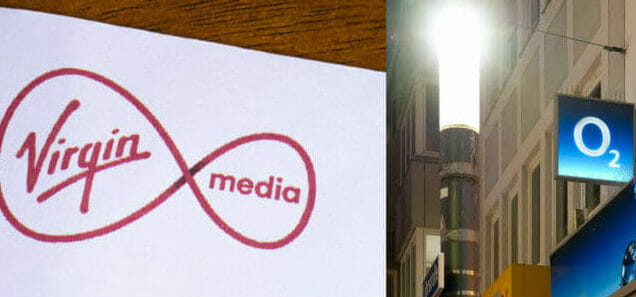The deal between Virgin Media and O2 is expected to be completed in the middle of next year, and plans have been announced to unlock £10 billion worth of investment in 5G and broadband throughout the UK over the course of five years.
A total of 46 million customers is expected for the merging telecoms companies, as well as £11 billion in revenue.
Curiously, the deal will see O2 and Virgin Media become full-blooded competitors to Sky, despite O2 currently providing mobile services to Sky.
As a result of the merger, Virgin Media customers are expected to move to O2’s parent company, Telefonica‘s network.
“The UK is one of the most attractive markets on Earth,” commented José María Alvarez-Pallete, chief executive of Telefonica. “Even considering Brexit, we have been investing heavily in the UK.
The impact of the coronavirus on the UK tech sector: disruption ahead?
“It is the right time to commit to the future of the UK by building this value proposition.”
Mike Fries, CEO of Virgin Media’s parent company, Liberty Global, added: “We couldn’t be more excited about this combination.
“Virgin Media has redefined broadband and entertainment in the UK with lightning fast speeds and the most innovative video platform, and O2 is widely recognised as the most reliable and admired mobile operator in the UK, always putting the customer first.”
Choppy waters ahead
According to Kester Mann, director, consumer and connectivity at CCS Insight, the pending deal between Virgin Media and O2 “will transform the UK telecoms landscape and create a powerful new converged provider to rival BT.” However, it won’t be plain sailing for the parties involved.
“The greatest challenges will arise after the deal completes,” Mann explained. “In particular, the new unit will need to dig deep to fund the costly expansion of cable and 5G services throughout the UK.
“In the long run, we believe it would be better for the joint venture to retain the O2 brand at the expense of Virgin Media. Both have a strong presence, but O2’s respected customer service, highly loyal customers and sponsorship of the O2 arena mean it is impossible to drop, and a multi-brand approach serves only to duplicate costs and risks confusing customers.
BT’s transformation strategy: connectivity, data and self-service
“Vodafone UK appears the biggest loser as the deal lays bare its weak position in the market for converged services. It also looks certain to scupper its virtual network partnership struck with Virgin Media in 2019.
“We think this deal will trigger a ripple effect on the UK market: Vodafone, Three, Sky and TalkTalk will all be assessing their positions and further deal-making can’t be ruled out.”
Next steps to be considered
With the merger not expected to be completed until 2021, Mike Kiersey, principal technologist at Boomi, believes that there is still much to be considered regarding next steps on starting to combine services.
“The success of this merger will hinge on several factors,” said Kiersey, “most notably the operating model (absorption, standalone or merger of equal), alignment to the business intent, and the process to execute the merger.
“To establish an efficient operating state, a clear integration framework must be put in place, whether that means the entities remain separate or embrace a purely integrated approach. In most cases, a symbiosis of both IT departments will be the likely result.
“Once this has been established, a clear M&A post-merger integration plan is critical to integrating business-critical applications, IT systems and data. Both companies need to understand the importance of a harmonised infrastructure, and the severe implications of a failure to integrate two different systems.
Digital M&A in an era of increased regulatory scrutiny
“Business integration needs to be swift, broken down into manageable chunks and with seamless application and data integration for all employee, partner, and customer services. In this way, data points become more accessible and clear, united by a master data management solution able to cross departmental and geographic borders in an agile yet controlled manner.”
[emailsignup]










